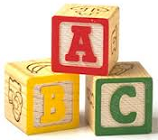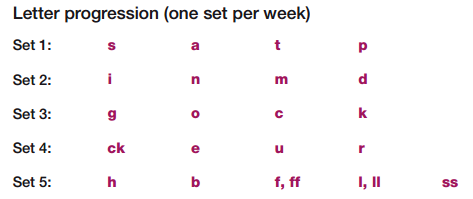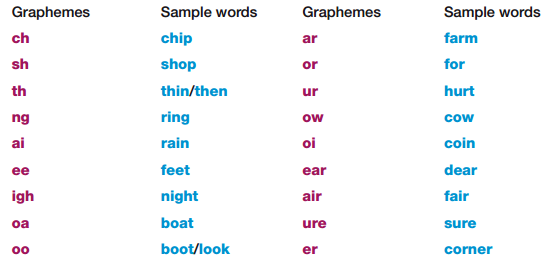
|
The Teaching of Phonics Our teaching of Phonics (reading and spelling) in Early Years and Key Stage 1 (Years 1 – 2) is based on the ‘Letters and Sounds’ programme which was published by the (then) Department for Education and Skills (DfES) in 2007. The programme aims to develop phonological awareness and skills for both reading and spelling and has SIX Phases. The Six Phases are taught as follows:
|
 |
|
In teaching phonics we use the following terms:
Letters and Sounds Phase 1 (Nursery) Phase 1 falls largely within the Communication, Language and Literacy area of learning in the Early Years Foundation Stage. In particular, it will support linking sounds and letters in the order in which they occur in words, and naming and sounding the letters of the alphabet. It also draws on and promotes other areas of learning described in the Early Years Foundation Stage (EYFS), particularly Personal, Social and Emotional Development and Creative Development, where, for example, music plays a key part in developing children’s language. Phase One contributes to the provision for Communication, Language and Literacy; it does not constitute the whole language provision. The activities in Phase One are mainly adult-led with the intention of teaching young children important basic elements of the Letters and Sounds programme such as oral segmenting and blending of familiar words. However, it is equally important to sustain and draw upon worthwhile, freely chosen activities that are provided for children in good early years settings and Reception classes. The aim is to embed the Phase One adult-led activities in a language-rich provision that serves the best interests of the children by fully recognising their propensity for play and its importance in their development. Phase One activities are arranged under the following seven aspects.
While there is considerable overlap between these aspects, the overarching aim is for children to experience regular, planned opportunities to listen carefully and talk extensively about what they hear, see and do. The boundaries between each strand are flexible and not fixed: practitioners should plan to integrate the activities according to the developing abilities and interests of the children in the setting. Each aspect is divided into three strands.
Activities within the seven aspects are designed to help children:
Letters and Sounds Phase 2 (Nursery and Reception) Children entering Phase 2 will have experienced a wealth of listening activities, including songs, stories and rhymes. They will be able to distinguish between speech sounds and many will be able to blend and segment words orally. Some will also be able to recognise spoken words that rhyme and will be able to provide a string of rhyming words, but inability to do this does not prevent moving on to Phase Two as these speaking and listening activities continue. The purpose of this phase is to teach at least 19 letters, and move children on from oral blending and segmentation to blending and segmenting with letters. By the end of the phase many children should be able to read some VC (e.g. at, of, up) and CVC (cat, big, cup) words and to spell them either using magnetic letters or by writing the letters on paper or on whiteboards. During the phase they will be introduced to reading two-syllable words and simple captions. They will also learn to read some high-frequency ‘tricky’ words: the, to, go, no. The teaching materials in this phase suggest an order for teaching letters and provide a selection of suitable words made up of the letters as they are learned. These words are for using in the activities – practising blending for reading and segmenting for spelling. This is not a list to be worked through slavishly, but to be selected from as needed for an activity. It must always be remembered that phonics is the step up to word recognition. Automatic reading of all words – decodable and tricky – is the ultimate goal. Phase 2 introduces the following sets of words:
|
|
|
|
|
|
Letters and Sounds Phase 3 Children entering Phase 3 will know around 19 letters and be able to blend phonemes to read VC words and segment VC words to spell. While many children will be able to read and spell CVC words, they all should be able to blend and segment CVC words orally. The purpose of this phase is to teach another 25 graphemes, most of them comprising two letters (e.g. oa), so the children can represent each of about 42 phonemes by a grapheme. Children also continue to practise CVC blending and segmentation in this phase and will apply their knowledge of blending and segmenting to reading and spelling simple two-syllable words and captions. They will learn letter names during this phase, learn to read some more tricky words and also begin to learn to spell some of these words. The teaching materials in this phase suggest an order for teaching letters and provide a selection of suitable words made up of the letters as they are learned and captions and sentences made up of the words. They are for using in the activities – practising blending for reading and segmenting for spelling. These are not lists to be worked through slavishly but to be selected from as needed for an activity. It must always be remembered that phonics is the step up to word recognition. Automatic reading of all words – decodable and tricky – is the ultimate goal.
|
|
|
|
|
|
|
|
|
Letters and Sounds Phase 4 Children entering Phase 4 will be able to represent each of 42 phonemes by a grapheme, and be able to blend phonemes to read CVC words and segment CVC words for spelling. They will have some experience in reading simple two-syllable words and captions. They will know letter names and be able to read and spell some tricky words. The purpose of this phase is to consolidate children’s knowledge of graphemes in reading and spelling words containing adjacent consonants and polysyllabic words. Letters and Sounds Phase 5 Children entering Phase 5 are able to read and spell words containing adjacent consonants and some polysyllabic words. (See Appendix 3: Assessment.) The purpose of this phase is for children to broaden their knowledge of graphemes and phonemes for use in reading and spelling. They will learn new graphemes and alternative pronunciations for these and graphemes they already know, where relevant. Some of the alternatives will already have been encountered in the high-frequency words that have been taught. Children become quicker at recognising graphemes of more than one letter in words and at blending the phonemes they represent. When spelling words they will learn to choose the appropriate graphemes to represent phonemes and begin to build word-specific knowledge of the spellings of words. Letters and Sounds Phase 6 By the beginning of Phase 6, children should know most of the common grapheme– phoneme correspondences (GPCs). They should be able to read hundreds of words, doing this in three ways:
Spelling Programme : Key Stage 2 Our teaching of spelling in Key Stage 2 (Years 3 – 6) is based on the National Curriculum Programme of Study for spelling for each year group. |
|



